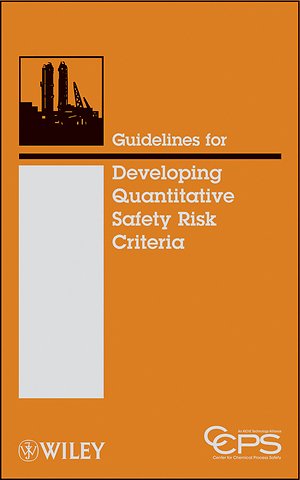Guidelines for Developing Quantitative Safety Risk Criteria
Gebonden Engels 2009 9780470261408Samenvatting
Written by a committee of safety professionals, this book creates a foundation document for the development and application of risk tolerance criteria
Helps safety managers evaluate the frequency, severity and consequence of human injury
Includes examples of risk tolerance criteria used by NASA, Earthquake Response teams and the International Maritime Organization, amongst others
Helps achieve consistency in risk–based decision–making
Reduces potential liabilities in the use of quantitative risk tolerance criteria through reference to an industry guidance document
Specificaties
Lezersrecensies
Inhoudsopgave
<p>Acknowledgments xv</p>
<p>List of Tables xix</p>
<p>List of Figures xxi</p>
<p>Acronyms and Abbreviations xxv</p>
<p>Glossary xxix</p>
<p>1 INTRODUCTION 1</p>
<p>1.1 What is Risk? 1</p>
<p>1.2 Scope of these Guidelines 7</p>
<p>1.3 Objectives of these Guidelines 8</p>
<p>2 FUNDAMENTAL CONCEPTS OF RISK ASSESSMENT AND RISK CRITERIA 11</p>
<p>2.1 A Brief History of Risk Assessment 11</p>
<p>2.2 The Qualitative Approach to Risk Assessment 15</p>
<p>2.3 Technical Aspects of QRA 21</p>
<p>2.4 Quantitative Risk Criteria 31</p>
<p>2.5 The Role of QRA and Risk Criteria 37</p>
<p>2.6 Risk Tolerance as a Function of Societal Values 39</p>
<p>2.7 Definition and Applications of the "As Low as Reasonably Practicable" (ALARP) Principle 44</p>
<p>2.8 Uncertainty and Its Impact on Risk Decision Making 46</p>
<p>3 LEARNING FROM REGULATORY PRECEDENTS 49</p>
<p>3.1 Why Study Risk Criteria? 49</p>
<p>3.2 The Evolution of Risk Criteria in the UK 51</p>
<p>3.3 The Evolution of Risk Criteria in the Netherlands 60</p>
<p>3.4 Comparison of Risk Criteria in the UK and the Netherlands 67</p>
<p>3.5 Learning from and Applying the Precedents 73</p>
<p>4 CONSIDERATIONS IN DEVELOPING RISK CRITERIA 79</p>
<p>4.1 Determine the Need to Establish Risk Criteria 80</p>
<p>4.2 Determine the Risks to be Addressed 82</p>
<p>4.3 Determine/Classify the Population to be Addressed 82</p>
<p>4.4 Determine Which Risk Criteria to Develop 84</p>
<p>4.5 Determine Whether Risk Criteria Will Distinguish Between New and Existing Facilities 85</p>
<p>4.6 Determine Philosophy for Continuing Risk Reduction 87</p>
<p>4.7 Develop Individual Risk Criteria 87</p>
<p>4.8 Develop Societal Risk Criteria 88</p>
<p>4.9 Qualifymalidate the Risk Criteria 88</p>
<p>4.10 Decide on a Philosophy for Apportioning and Scaling the Risk Criteria 91</p>
<p>4.11 Periodically Revalidate the Risk Criteria 98</p>
<p>4.12 Matching the Risk Criteria with the System and with the Risk Estimation Methodology 100</p>
<p>4.13 Risk Criteria in the Multinational Context 102</p>
<p>4.14 Consideration of Short DuratiodHigher Risk Activities 103</p>
<p>5 FUTURE TOPICS 105</p>
<p>5.1 Fostering the Application of Risk–Based Decision Making 105</p>
<p>5.2 Enhancing Risk Assessment Technology 106</p>
<p>Appendix A: Understanding and Using F–N Diagrams 109</p>
<p>Appendix B: Survey of Worldwide Risk Criteria Applications 119</p>
<p>Appendix C: Development of Company Risk Criteria 171</p>
<p>REFERENCES 191</p>
<p>INDEX 207</p>
Rubrieken
- advisering
- algemeen management
- coaching en trainen
- communicatie en media
- economie
- financieel management
- inkoop en logistiek
- internet en social media
- it-management / ict
- juridisch
- leiderschap
- marketing
- mens en maatschappij
- non-profit
- ondernemen
- organisatiekunde
- personal finance
- personeelsmanagement
- persoonlijke effectiviteit
- projectmanagement
- psychologie
- reclame en verkoop
- strategisch management
- verandermanagement
- werk en loopbaan
